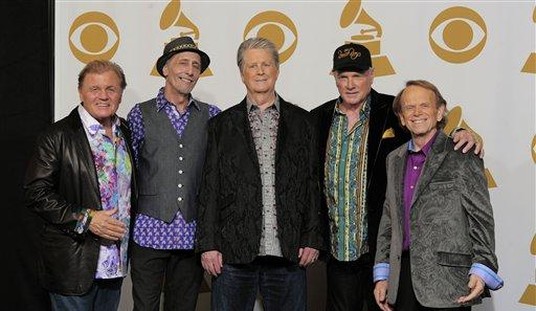=========
=========
Promoted from the diaries by streiff. Promotion does not imply endorsement.
=========
=========
It helps just so much to pad your statistics when you wish to bolster your argument. If no one does anything really radical like check your numbers, then it’s so simple: you have gotten away with it. That’s what Jared Odessky, a student at Harvard Law School, and Miriam Frank, a former professor of humanities at New York University and the author of “Out in the Union: A Labor History of Queer America,” did in The New York Times, but, alas! I’m the kind of guy that does check the numbers.
Janus Is This Term’s Worst L.G.B.T. Ruling
By Jared Odessky and Miriam Frank | June 27, 2018
The Supreme Court just dealt a staggering blow to the L.G.B.T. rights movement. And no, it had nothing to do with wedding cake. While the eyes of most L.G.B.T. advocates this term were concentrated on Masterpiece Cakeshop v. Colorado Civil Rights Commission, the legal ruling was decidedly narrow. The court’s 5-4 decision today in Janus v. American Federation of State, County, and Municipal Employees, however, will have immediate and lasting implications for the livelihoods of queer people.
In Janus, the court ruled, on First Amendment grounds, that public-sector employees who do not join their workplace’s labor union cannot be required to pay “fair share fees” to cover the costs of collective bargaining, even though all unions have an obligation to represent paying members and nonmembers alike. Because union membership today is five times higher in the public sector than in the private sector, the ruling is expected to drain organized labor’s already diminished coffers.
Why is union membership five times higher in the public sector than in private industry? It’s simple: unions in the private sector have to be, in the end, partners with companies. Unions cannot demand so much from corporations that the corporations cease to make a profit, and go out of business. After all, what good does it do to win a wage of $100.00 per hour if you are getting zero hours per week? Unions in the private sector have simply not been seen as that useful to workers anymore.
In the public sector, ‘customers’ are captive; they cannot just choose not to ‘buy’ the government’s services, because the government is financed by tax dollars, taken by tax collectors, and backed by the police power of the state. Not enough tax dollars coming in? Then governments simply increase taxes! And public sector unions can be more useful to members, because the constraint of being able to demand no more than the company can afford does not apply.
Today’s decision will weaken the power of more than five million public workers in the remaining 22 states that allow unions to collect fees. And since public- and private-sector employees often share the same parent union (such as the A.F.T., the S.E.I.U. and the U.A.W.), the Janus decision is likely to deplete resources for worker organizing in private industries, too.
What does any of this have to do with L.G.B.T. rights? State and local governments employ an estimated one million people who identify as L.G.B.T. Without funds for unions to sustain services and organizing, L.G.B.T. employees are at risk: In the 29 states lacking full protections against employment discrimination for sexual orientation and gender identity, a collective bargaining agreement with a nondiscrimination provision is often a worker’s only refuge.
Why, how dare people actually support the First Amendment rights of individuals over the good of the Collective. Perhaps that’s what the Times meant when it said that conservatives have ‘weaponized’ freedom of speech.
Here is where we get to the bogus statistic used by Mr Odessky and Dr Frank. They claimed that there are “an estimated one million” state and local government workers who are ‘LGBT.’ They cite the Williams Institute’s estimates:
While no existing surveys provide precise estimates of the size of the LGBT workforce in the public and private sectors, estimates of the employment patterns of the LGBT population can e derived by extrapolating information from two nationally representative data sources. The National Survey of Family Growth, conducted in 2002, asked the sexual orientation of men and women aged 18-44 and found that 4.1 percent identified as gay, lesbian, or bisexual. Applying the 4.1 percent figure to all adults implies that there are approximately 9 million LGBT adults in the United States.
The internal references in the Williams Institute’s paper are dated between 2002 and 2005. The Centers for Disease Control did the work in 2013 — when Barack Obama was President, and the federal government was quite supportive of LGBT causes — and their estimates were as follows:
- 96.6% of adults identified as heterosexual;
- 1.6% identified as homosexual; and
- 0.7% identified as bisexual.
The remaining 1.1% of adults responded “something else,” “I don’t know the answer,” or declined to answer.
Using the better, more recent statistics, we find that, instead of the 1,002,606 that the Williams Institute estimated to be homosexual or bisexual employees, based on an assumed 4.1% guesstimate, applying the 2.3% figure we get not the “estimated one million” such employees, but, using more recent statistics of state and local government workers, 14,459 local and 5,070,000 state employees, for a total of 19,529,000 employees, we come up with 449,167 total homosexual or bisexual employees. Even if we add the 2,808,000 federal workers into the number, for a total of 22,337,000 government workers, the 2.3% figure yields only 513,751 homosexual or bisexual employees.
It is almost impossible to believe that Mr Odessky and Dr Frank, apparently researchers interested in the topic — much of the rest of the OpEd piece was filled with different milestones in the LGBT political campaign — were unaware of the CDC numbers, and, given that the research was done during the Obama Administration, under the auspices of a government agency, there is no real reason to think that there was any downward bias applied. That the authors chose to use the older, higher figure, without any explanation given for ignoring the CDC figures or why they might believe them to be wrong, appears to this writer to be a deliberate fabrication.
Mr Odessky and Dr Frank concluded:
For several years, the L.G.B.T. rights movement has felt almost unstoppable, as marriage equality became the law of the land and nondiscrimination efforts steadily progressed. Masterpiece Cakeshop broke the winning streak, and with Janus we sustain another hard loss.
In both of those cases, the rights of individuals not to be coerced to the will of the collective triumphed. In Masterpiece Cakeshop, LTD, et al, v Colorado Civil Rights Commission, et al, the right of an individual baker, Jack Phillips, to not have to bake a wedding cake for a same-sex couple. The left were aghast that an individual’s freedom of religion rights were somehow seen as trumping the will of the collective. Janus does not break the unions; it simply allows those who do not wish union representation, for whatever reasons they have, to opt out of membership and paying union dues. Again, the rights of the individual are far less important to the left than the good of the collective.
That’s why Mr Odessky and Dr Frank had to lie about the numbers of homosexual and bisexual government workers: half a million just isn’t as impressive an ‘argument’ as a million, and their OpEd piece loses some of its urgency. When an educated pair such as the two authors choose to lie deliberately, over a commonly known statistic, a lie which could be too easily discovered, then you know that they found it important to lie; why do so otherwise?
Lying about the numbers takes their entire case and throws it in the trash.
______________________________
Cross-posted on The First Street Journal.














Join the conversation as a VIP Member